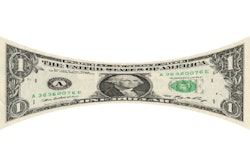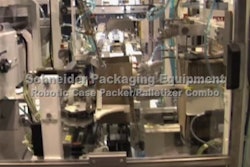
Elin Raymond
When it comes to greener packaging, “consumers get it.” That’s according to Elin Raymond, president of The Sage Group, Inc. In late January, Raymond presented the results of a study on consumers’ beliefs and behaviors surrounding sustainable packaging at the Michigan State University School of Packaging’s second annual Packaging Executives Forum.
Among the insights gleaned from the Sage study, Raymond shared that consumers consider the authenticity and integrity of green claims to be essential and that they recognize greenwashing. She also noted that in the consumer’s “eco-perception,” a consumer packaged goods company, its product, and its packaging are an integrated whole. “Green is an organizational cultural keystone, a key brand attribute,” she said.
As Raymond explained, the study grouped respondents into four generational categories: “Millennials” (17 to 25 years old), “GenXers” (26 to 40), “Boomers” (41 to 55), and “Matures” (56+). While responses varied depending upon the questions asked, almost across the board, Matures proved to be the most eco-friendly group, while Millennials showed the least proclivity toward green behavior. “Matures are the champions of sustainability, by all measures,” Raymond noted.
When it comes to recycling, the study showed that 89.7% of Matures always recycle, followed by 69.6% of GenXers, 67.6% of Boomers, and 56.8% of Millennials. Of all the groups, Matures were shown to be the most willing to pay for eco-friendly packaged products (44.8%), and 75.9% of Matures said that the eco-impact of packaging has a “big impact” on their buying decisions. The only group that said that the eco-friendly nature of products has only “somewhat of an impact” was Millennials, at 61.7%.
Perceptions count
In the mind of the consumer, perception equals reality when it comes to brand packaging, Raymond told conference attendees. According to the study, the packages perceived by consumers as being the most eco-friendly include glass containers, aluminum cans, products sold in bulk, cardboard packaging, paper grocery bags, concentrated liquids, and packaging made from recycled materials.
Respondents identified non eco-friendly packages as including “single-serve anything”; electronics and toy packaging; heavy, hard plastic-packaged items or bottles; anything not made from recycled materials; anything that can’t be recycled; “overkill” packaging; most plastic water bottles; Styrofoam; takeout containers; plastic can rings; clamshell containers; and disposable plastic plates and utensils.
From these and other responses, Sage concluded that consumers see sustainable packaging as being synonymous with recyclable materials. Therefore, “more education is needed,” Raymond advised.
Green marketing strategies
To appeal to each generation with the appropriate green marketing approach, Raymond gave audience members a number of solid strategies. For the two youngest groups, she noted, companies must create an online life/friends for their brand. “Millennials and GenXers are always linked online,” she said.
Among her suggestions for marketing to the 17 to 40 year olds:
• Keep engaged via two-way social media. This includes hosting online contests, creating a Facebook company profile, and using Twitter to announce events, brand extensions, etc.
• Help them try your brand by providing free/discount coupons on Facebook, MySpace, and other Web sites. Integrate online and traditional marketing.
• E-mail press releases and announcements to environmental and industry blogs.
• Track what’s said about your brand/product via YackTrack.com.
• Sponsor environmental or cause-related events in target geographic markets.
For Boomers and Matures, Raymond advised the following:
• Place ads, articles, and TV news spots in media outlets and publications identified as favorites in brand research.
• Focus on brand/product environmental attributes and education.
• Drive them to your Web site for downloadable “Green Bucks Back,” special offers, and updates on the three environmental Rs.
• Gather e-mail addresses for them and friends.
• E-mail or mail Green Bucks Back and special offers.
• Use green event marketing in target geo-markets.
• Ask for e-feedback on product/brand and reward input.
Among the insights gleaned from the Sage study, Raymond shared that consumers consider the authenticity and integrity of green claims to be essential and that they recognize greenwashing. She also noted that in the consumer’s “eco-perception,” a consumer packaged goods company, its product, and its packaging are an integrated whole. “Green is an organizational cultural keystone, a key brand attribute,” she said.
As Raymond explained, the study grouped respondents into four generational categories: “Millennials” (17 to 25 years old), “GenXers” (26 to 40), “Boomers” (41 to 55), and “Matures” (56+). While responses varied depending upon the questions asked, almost across the board, Matures proved to be the most eco-friendly group, while Millennials showed the least proclivity toward green behavior. “Matures are the champions of sustainability, by all measures,” Raymond noted.
When it comes to recycling, the study showed that 89.7% of Matures always recycle, followed by 69.6% of GenXers, 67.6% of Boomers, and 56.8% of Millennials. Of all the groups, Matures were shown to be the most willing to pay for eco-friendly packaged products (44.8%), and 75.9% of Matures said that the eco-impact of packaging has a “big impact” on their buying decisions. The only group that said that the eco-friendly nature of products has only “somewhat of an impact” was Millennials, at 61.7%.
Perceptions count
In the mind of the consumer, perception equals reality when it comes to brand packaging, Raymond told conference attendees. According to the study, the packages perceived by consumers as being the most eco-friendly include glass containers, aluminum cans, products sold in bulk, cardboard packaging, paper grocery bags, concentrated liquids, and packaging made from recycled materials.
Respondents identified non eco-friendly packages as including “single-serve anything”; electronics and toy packaging; heavy, hard plastic-packaged items or bottles; anything not made from recycled materials; anything that can’t be recycled; “overkill” packaging; most plastic water bottles; Styrofoam; takeout containers; plastic can rings; clamshell containers; and disposable plastic plates and utensils.
From these and other responses, Sage concluded that consumers see sustainable packaging as being synonymous with recyclable materials. Therefore, “more education is needed,” Raymond advised.
Green marketing strategies
To appeal to each generation with the appropriate green marketing approach, Raymond gave audience members a number of solid strategies. For the two youngest groups, she noted, companies must create an online life/friends for their brand. “Millennials and GenXers are always linked online,” she said.
Among her suggestions for marketing to the 17 to 40 year olds:
• Keep engaged via two-way social media. This includes hosting online contests, creating a Facebook company profile, and using Twitter to announce events, brand extensions, etc.
• Help them try your brand by providing free/discount coupons on Facebook, MySpace, and other Web sites. Integrate online and traditional marketing.
• E-mail press releases and announcements to environmental and industry blogs.
• Track what’s said about your brand/product via YackTrack.com.
• Sponsor environmental or cause-related events in target geographic markets.
For Boomers and Matures, Raymond advised the following:
• Place ads, articles, and TV news spots in media outlets and publications identified as favorites in brand research.
• Focus on brand/product environmental attributes and education.
• Drive them to your Web site for downloadable “Green Bucks Back,” special offers, and updates on the three environmental Rs.
• Gather e-mail addresses for them and friends.
• E-mail or mail Green Bucks Back and special offers.
• Use green event marketing in target geo-markets.
• Ask for e-feedback on product/brand and reward input.

























